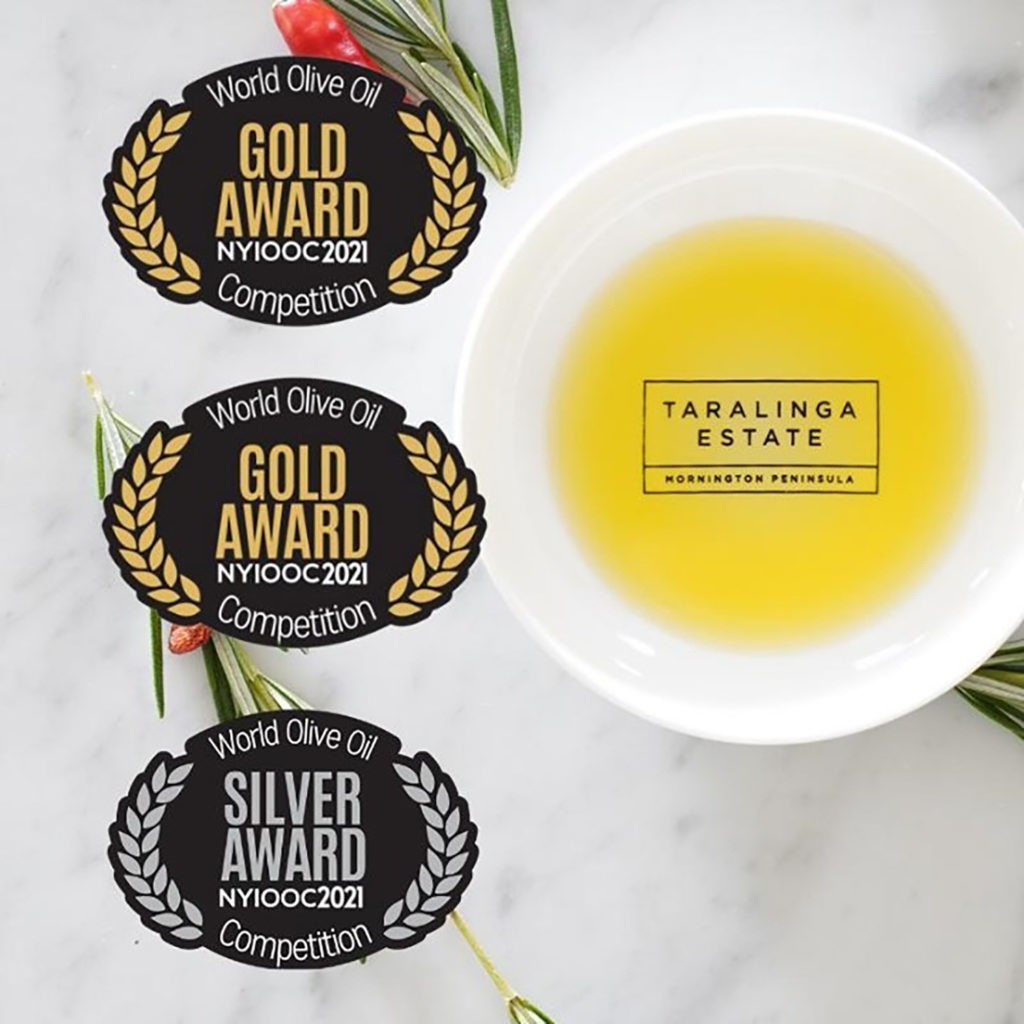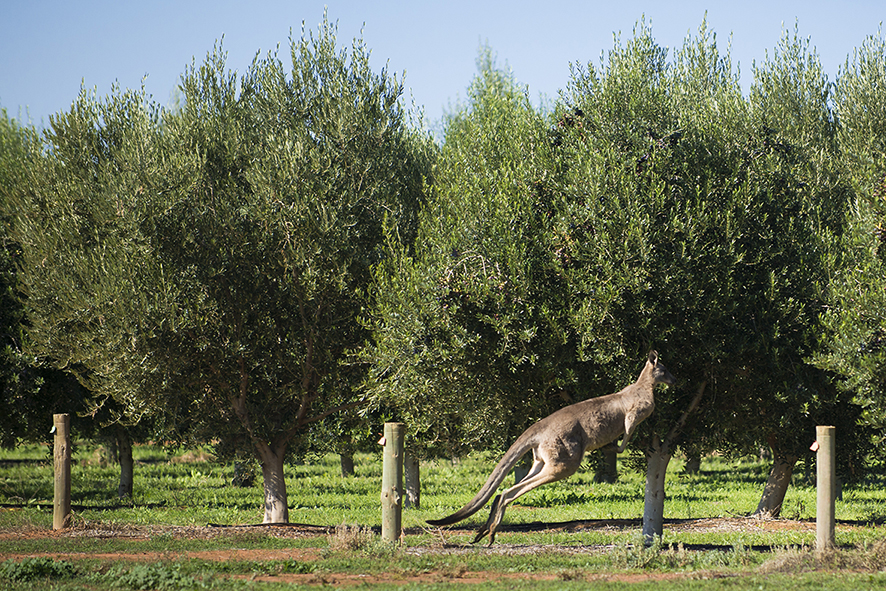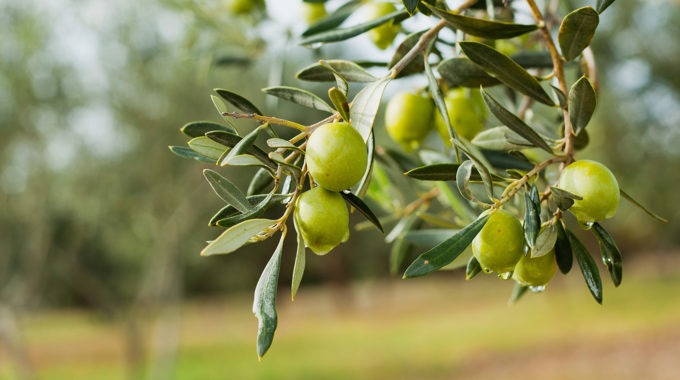Record year for Australian olive oil
The Australian olive industry has bounced back in spectacular fashion after a low production year in 2020. Growers are now reporting record harvests as olive-growing areas emerge from drought and experience more favourable seasonal conditions. Last year, Australian olive oil production was only 25 to 30 percent of average production levels, with high temperatures and dwindling water supplies affecting many growers. However, low production levels can also be due to the fact that olive trees are biennial bearers. This means they’ll produce more fruit one year and less the next.
“Olive production is typically cyclical, with high production years alternating with lower production years,” says Michael Southan, CEO of the Australian Olive Association. “This biennial bearing is a natural cycle associated with olives and other tree crops. However, it also shows the effect of drought and other environmental impacts.”

From little things good things flow
Certified organic olive oil producer Jude Cazaly, owner of Flinders Island Olives, almost didn’t pick her crop last year because the yield was so low.
“Also, it was COVID; there was hardly anybody around,” she says. “But then a friend said, ‘Come on, we’re bored, we can’t get off the island – let’s pick’.”
Cazaly is certainly glad they did. Flinders Island Olives’ 2020 organic extra virgin olive oil (EVOO) won a gold medal, Best of Show Boutique Volume, Medium EVOO Reserve Champion and Best of State at the 2020 Australian International Olive Awards, and also won gold at the Royal Adelaide Show. It was an incredible achievement for such a small producer. Flinders Island Olives’ 1100-tree grove is planted over just 3.6 hectares.
“I know it sounds corny, but it took my breath away,” Cazaly says. “Last year was fantastic.”
While Flinders Island Olives is only a small player compared to some of our bigger olive oil producers, Cazaly is expecting a good yield for their 2021 harvest. It looks to increase to six tonnes this year, up from one and a half in 2020 and three and a half in 2019.
“It’s a combination of quite a few things,” Cazaly says of the improved yield. “Our trees are maturing, and some are just starting to flourish since we planted a windbreak of sheoaks. We get the roaring 40s that come through Bass Strait. That slows growth and affects yield.
“The year before last we also had a colder spring and a colder summer, which dropped the yield last year. But this year, the temperatures were more even. So I’ll be really interested to see what the effect will be on the flavour.”

A very good year
As harvest approaches completion, the industry expects to produce a record 20,000 tonnes of olive oil in 2021. Leandro Ravetti, chief oil maker at Cobram Estate – Australia’s largest olive oil producer – describes the past 12 months in northern Victoria as the “perfect conditions”, making this the best harvest yet.
“This is one of the most incredible harvests on record due to the perfect climatic conditions,” he says. “A wet winter followed by a mild summer meant that, come harvest, the trees at Cobram Estate were heavy with fruit. More fruit means the olives ripen more slowly; they’re greener for longer. That extra greenness imparts the oil with more flavour.”
Greg Mathews of Grampians Olive Co. says that in the Grampians region of Victoria, they enjoy the ideal Mediterranean climate – hot, dry summers and cold, wet winters. It’s perfect for premium organic olive oil production. But this season has been a particularly good one.
“By choice, we don’t irrigate our trees, so we’re very dependent on rainfall,” he says “Widespread rain came at the perfect time in spring 2020, setting up our olive trees for prolific flowering. This translated into a very good fruit set.
“Following spring, we had a relatively mild summer, which ensured the olives kept growing, accumulating oil and ripening to perfection. As a result, we’ve been blessed with good quality and quantity of olives. We couldn’t be happier with how the season has developed.”

Aussie oil: the gold standard
The olive industry is young in Australia, but has seen tremendous growth over the last 20 years. Australia’s climate suits the production of high-quality olive oil, with more than 75 percent of fruit producing EVOO quality. In comparison, only about 25 percent of oil produced from olives grown in Mediterranean countries is EVOO.
With quality like this, it’s not surprising that the world is taking notice. Australian olive oil producers recently won 15 awards from 16 entries – including a record 13 gold medals – at the 2021 NYIOOC World Olive Oil Competition, the world’s largest olive oil competition.
The Mornington Peninsula’s Taralinga Estate won two gold awards and a silver award, backing up double gold years in 2019 and 2020. For the producers behind the oil, these three awards are extra gratifying after a year marked by significant challenges.
“At the time of the 2020 harvest, the Mornington Peninsula was in lockdown,” says Taralinga Estate Marketing Manager Karen Godfrey. “The team was under extreme pressure, forcing us to think outside the box on how to manage the harvest.
“We entered three extra virgin olive oils – one of which we’d never entered into a competition before. All three won awards. We are extremely proud of the result.”
It’s certainly been a very good year for Victorian olive oil. Also from the Mornington Peninsula, Leontyna won a gold award at the NYIOOC awards, while Mount Zero Olives, one of Australia’s oldest olive groves located on the edge of the Grampians National Park, won a silver. Cape Schank Olive Estate – which also won Best of Show at the 2020 Australian International Olive Awards – and Cobram Estate both won five gold.

The taste of 2021
While this year has been an enormously rewarding one for our olive oil producers, for the industry as a whole, the goal moving forward is to keep the good oil flowing.
“One of the main challenges we have is to become more consistent in production from one year to the next,” says Southan. “The industry is currently focused on targeted grove management practices to reduce this variation in production. The aim is to ensure there’s enough fresh, local extra virgin olive oil available year-round.
“The good news is that the record 2021 harvest means consumers will be spoilt for choice when it comes to selecting extra virgin olive oil. They won’t have to look past our fresh, high-quality Australian products.”
To celebrate the 2021 harvest, Ravetti, together with Cobram Estate co-founder Rob McGavin and nutrition scientist Dr Joanna McMillan, will host five interactive Cobram Estate EVOO tasting masterclasses, from June to October. You can book a virtual tasting here. You can find the just-released range of oils at supermarkets and food stores nationally. It’s also available online at the Cobram Estate website.
For those who’d like a taste of Flinders Island Olives’ EVOO, you can order it online at flindersislandoliveoil.com, or Tasmanians can find it at Hill Street Grocers and East Coast Village Providore. Grampians Olive Co. organic olive oils can be found at selected stockists around Australia. You can also buy it direct from grampiansoliveco.com.au. The first harvest – Olio Nuovo EVOO – is immediately bottled and sent directly to customers.









